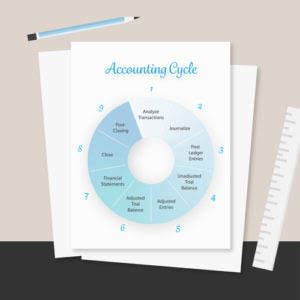
Your terms with your suppliers should ideally be equal to or longer than the terms you give your customers. Apply various curves (such as bell curve, linear, front-loaded, or back-loaded) to the schedule of values based on the scope of work. These curves help in mapping out how the remaining budget will be spent over time, based on the project’s phases and milestones. As you wrap up a project, the final days have a pretty meaningful impact on your overall profitability and success. As the saying goes, “Projects are remembered not by how they start but how they finish.” If something takes a wrong turn in closeout, that ‘perfect’ project can quickly become a nightmare. Punch list work might seem minor, but it has an improportionate impact on payment.
Mastering Cash Flow Fluctuations: Essential Insights for the Construction Industry
Understanding and managing retainage requirements is another key component in construction project finances. Retainage refers to withholding a portion of payment until the project reaches completion or certain milestones. Construction companies must comprehend the regulations surrounding retainage and manage it under legal requirements.
Manage your DSO and other financial metrics

Sending preliminary notices are an industry standard practice, and you’ll find that the most liquid and successful construction companies send pre-liens on every single project. Aside from the payment terms on your contract with the client, one of the most powerful ways to encourage early or timely payments is by pro-actively sending Preliminary Notices for all your projects. The last few days of a job truly impact not only the overall success of a project but also your profitability. A contractor’s work is remembered not really by how a project is started but how it’s finished. Examining this report, you’ll see who hasn’t paid yet and you can compare that against your billing schedule and the job cost report.

Cash Flow Management in Construction: Issues and Solutions
Payments to suppliers, subcontractors, and the in-house workforce are determined through certifications, which establish how much should be paid based on the progress made in the project. They’re often the result construction cash flow of a project that requires more time, money, and/or resources than originally thought. The project manager should process a change order immediately, rather than waiting until the project is complete.
- This involves forecasting the anticipated cash inflow from various sources, including clients, investors, or lenders.
- The projected cost to complete must then be allocated over the remaining duration of the project.
- It’s always a good idea to comparison shop between suppliers to make sure you’re getting the best price.
- For more information on how Sage uses and looks after your personal data and the data protection rights you have, please read our Privacy Policy.
- When the company is receiving more money than they are expending, the company is said to have a positive cash flow, while when expenditures are greater than income, the company has negative cash flow.
- Creating a cash flow schedule is a fundamental step in construction project financial management.
It’s critical that companies in the industry address the practices that drain their cash, and build good cash flow management practices to prevent future problems. Let’s look more closely at what cash flow management is, problems in the construction industry – and possible solutions. Furthermore, proper cash flow management enables contractors to take advantage of new opportunities as they arise. With sufficient funds available, they can quickly respond to requests for proposals or invest in equipment upgrades that could enhance productivity. As the construction industry progressively moves towards sustainable practices, cashflow management plays a significant role.
Financial Reporting and Transparency
Though it’s impossible to predict unexpected events, having potential solutions in place as a safeguard could help cushion their financial impact. You sign a contract too fast to lock in a new job before doing your due diligence. Good invoicing requires close coordination between the project manager and the office or credit manager. Businesses need to understand more than just how much money they have in the bank.
- Cloud-based platforms enable seamless collaboration and accessibility, allowing stakeholders to monitor and update budgetary information, no matter their location.
- In contracts, the mode of collection and its schedule are usually spelled out explicitly, but that doesn’t always mean that (1) you will get paid and even that (2) on-time payment will ensure cash flow.
- The best approach is to bill according to how much of the project has been completed.
- If you overbill a project, you’ll have an influx of cash up front, but nothing to cover expenses at the end of the project (when hidden costs tend to pop up).
- This integration allows for the smooth flow of financial information, eliminating data silos and minimizing errors that may occur during manual data transfers.
- It involves payments for materials, labor, equipment, subcontractors, and other expenses.
Importance of Accurate Accounting and Bookkeeping
Strategies for keeping project costs in check are extremely helpful in ensuring healthy cash flow. Adopting rigorous cost control measures involves monitoring expenditures, no matter the size. This helps you identify potential cost overruns early on and implement corrective actions. Construction projects often involve complex payment structures linked to project milestones or completion phases, leading to delays in receiving payments from clients.
Financing Options to Support Cash Flow
A cash flow projection report is a financial document specifically designed to forecast the cash outflow on a construction project over a certain period, estimating when and how much. Once you identify KPIs and benchmarks and develop some comparable scenarios and intel, the real value building begins by analyzing what actions will create measurable change in your cash flow management approach. If you’d like to learn how Autodesk Construction Cloud can help you manage cash flow like a pro on every project, please contact us. One of our cost experts would be happy to show you how to level up your cost management workflows. By bringing your cost and project management systems together, you’ll find big decisions get easier because you have the time to make them.
Sustainability and Cashflow in Construction
- Conducting this type of analysis helps to identify any risks and opportunities of the project.
- Construction companies must comprehend the regulations surrounding retainage and manage it under legal requirements.
- The construction industry is a labyrinth of interconnected processes requiring synchronized management for successful project delivery.
- Risk identification is a foundational step in construction project financial management.
- Mechanics’ liens give contractors a legal claim against the property in the event of non-payment.
Cash flow projection reports should be prepared by individuals who have a thorough understanding of both the project schedule and the budget. Their dual expertise ensures that projections are realistic and closely aligned with the project’s actual progress and financial status. Understanding the interplay https://www.bookstime.com/ between the project’s timeline and budget is key to predicting cash flow needs accurately, allowing for adjustments as the project evolves. Calculating cash flow projections in construction requires a detailed understanding of the project’s budget, schedule, and the rate of work progression.
